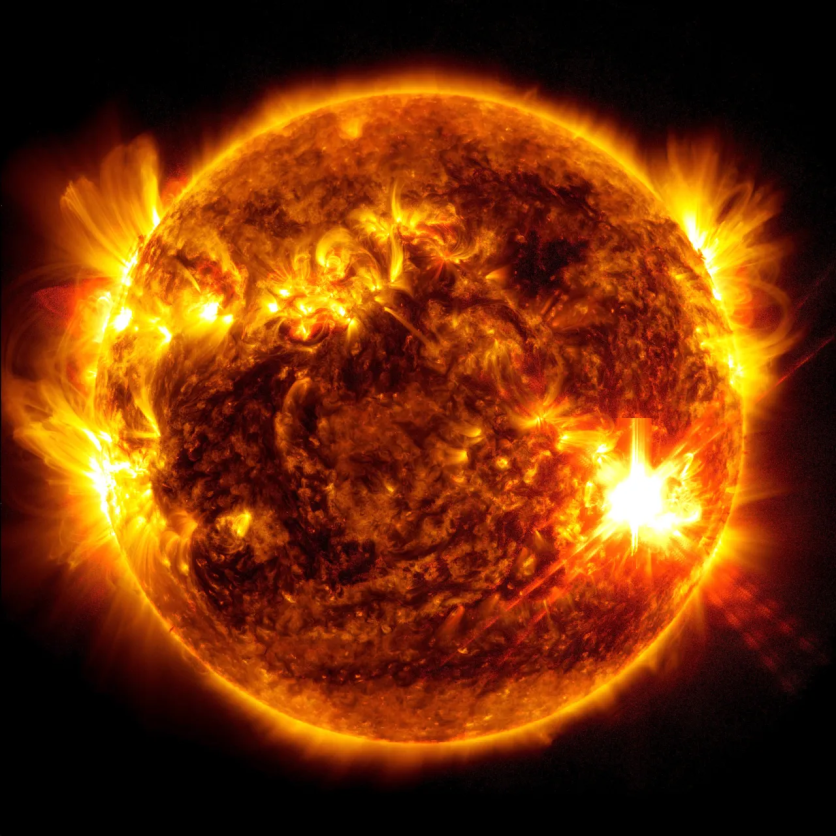NASA has just captured the most intense solar storm witnessed in decades. May 2024 has been particularly stormy for the Sun, which has become a focal point of interest for scientists.

The Most Intense Solar Storm in Two Decades
In the first week of May, a series of large solar flares and coronal mass ejections (CMEs) launched waves of charged particles and magnetic fields toward Earth, culminating in the most powerful solar storm in two decades, according to NASA. This event also produced one of the most spectacular auroral displays in 500 years.
The solar storm began late on May 7 with two strong solar flares. Between May 7 and May 11, various strong solar flares and at least seven CMEs were directed toward Earth.
Eight were classified as X-class, the most powerful category of solar flares, with the most intense reaching X5.8. Following this, the same solar region produced additional large flares, including an X8.7 flare on May 14, the most powerful flare observed in this solar cycle.
NASA reported that the CMEs traveled at speeds up to 3 million miles per hour and struck Earth starting on May 10, triggering a prolonged geomagnetic storm. This storm achieved a G5 rating, the highest level on the geomagnetic storm scale and a level not seen since 2003.
The solar storm generated brilliant auroras visible around the globe, extending to unusually low latitudes such as the southern United States and northern India. The most vivid auroras occurred on the night of May 10.
NASA notes that advances in camera technology, including standard cell phone cameras, have made it easier to capture the colors of the aurora.
By analyzing the geomagnetic storm strength using the disturbance storm time index, which has data dating back to 1957, this storm's intensity was comparable to intense storms in 1958 and 2003.
Reports of auroras being visible as far south as 26 degrees magnetic latitude suggest that this storm may rival some of the lowest-latitude auroral sightings on record from the past five centuries. However, NASA said that scientists are still evaluating its ranking.
Read Also : NASA Captures Sun Unleashing a Powerful Solar Flare That Triggers Radio Blackouts in Western US
Preparing for the Solar Storm
In anticipation of the storm, the National Oceanic and Atmospheric Administration's (NOAA) Space Weather Prediction Center released alerts to operators of power grids and commercial satellites to alleviate possible impacts.
These notifications also allowed NASA missions to prepare for the storm, with certain spacecraft preemptively shutting down specific instruments or systems to prevent complications.
The solar region accountable for this recent surge of activity is now shifting to the far side of the Sun, shielding Earth from its effects. Nevertheless, NASA's Solar Terrestrial Relations Observatory (STEREO), stationed approximately 12 degrees ahead of Earth in its orbit, will persist in monitoring this active region for an extra day beyond its visibility from Earth.
Related Article : Sun's Canyon-Like Coronal Hole to Emit Solar Flare; When It Will Hit Earth, Severity, Other Details

ⓒ 2025 TECHTIMES.com All rights reserved. Do not reproduce without permission.




